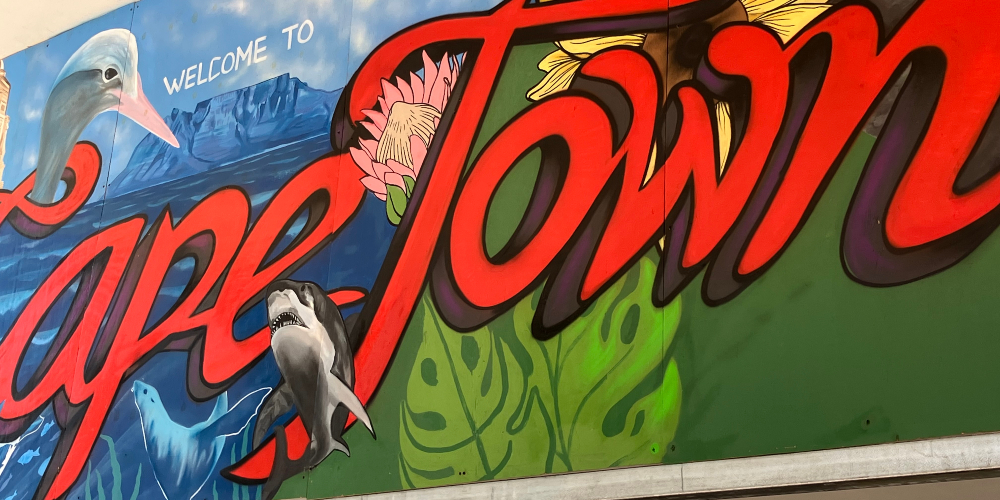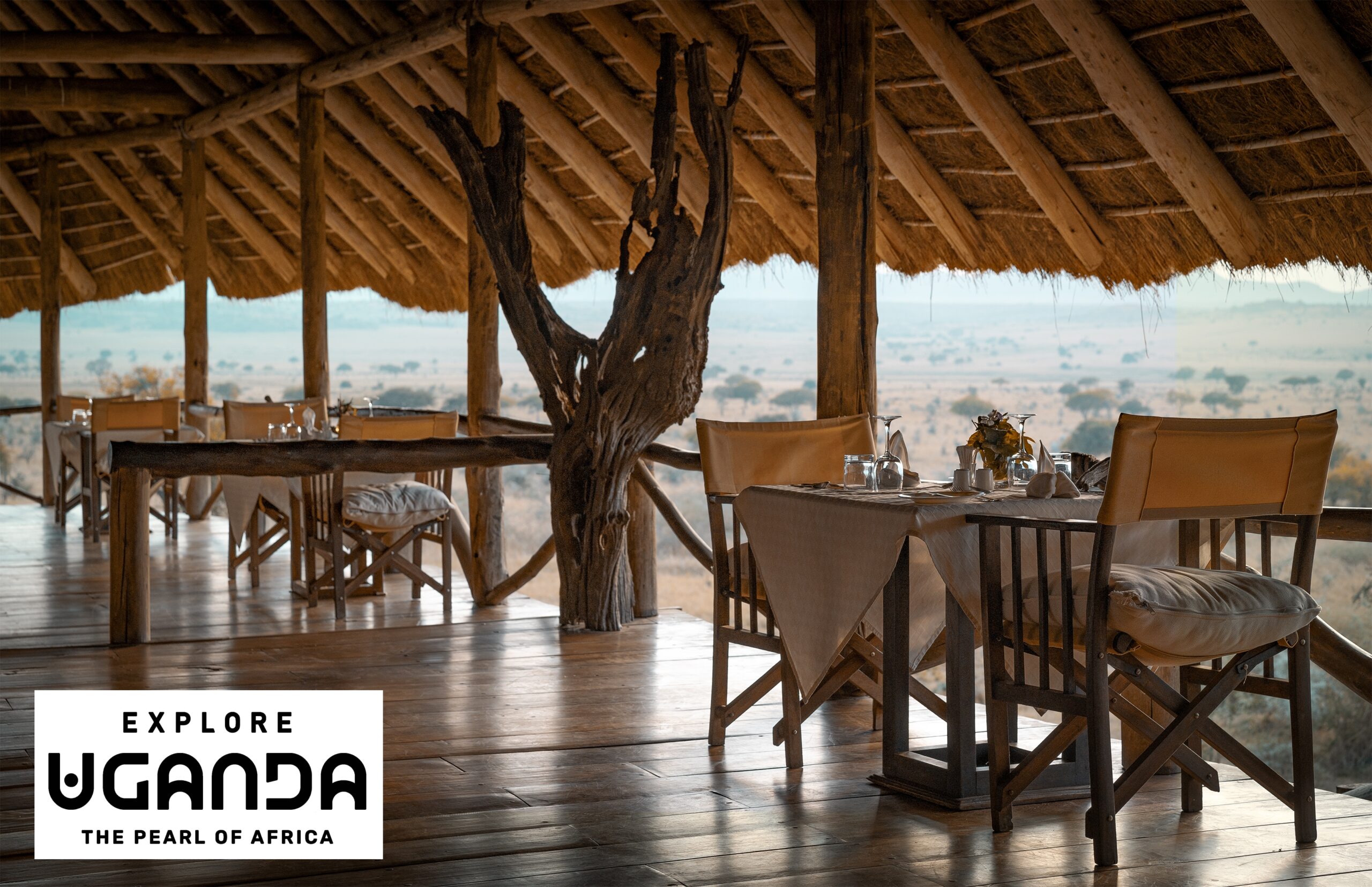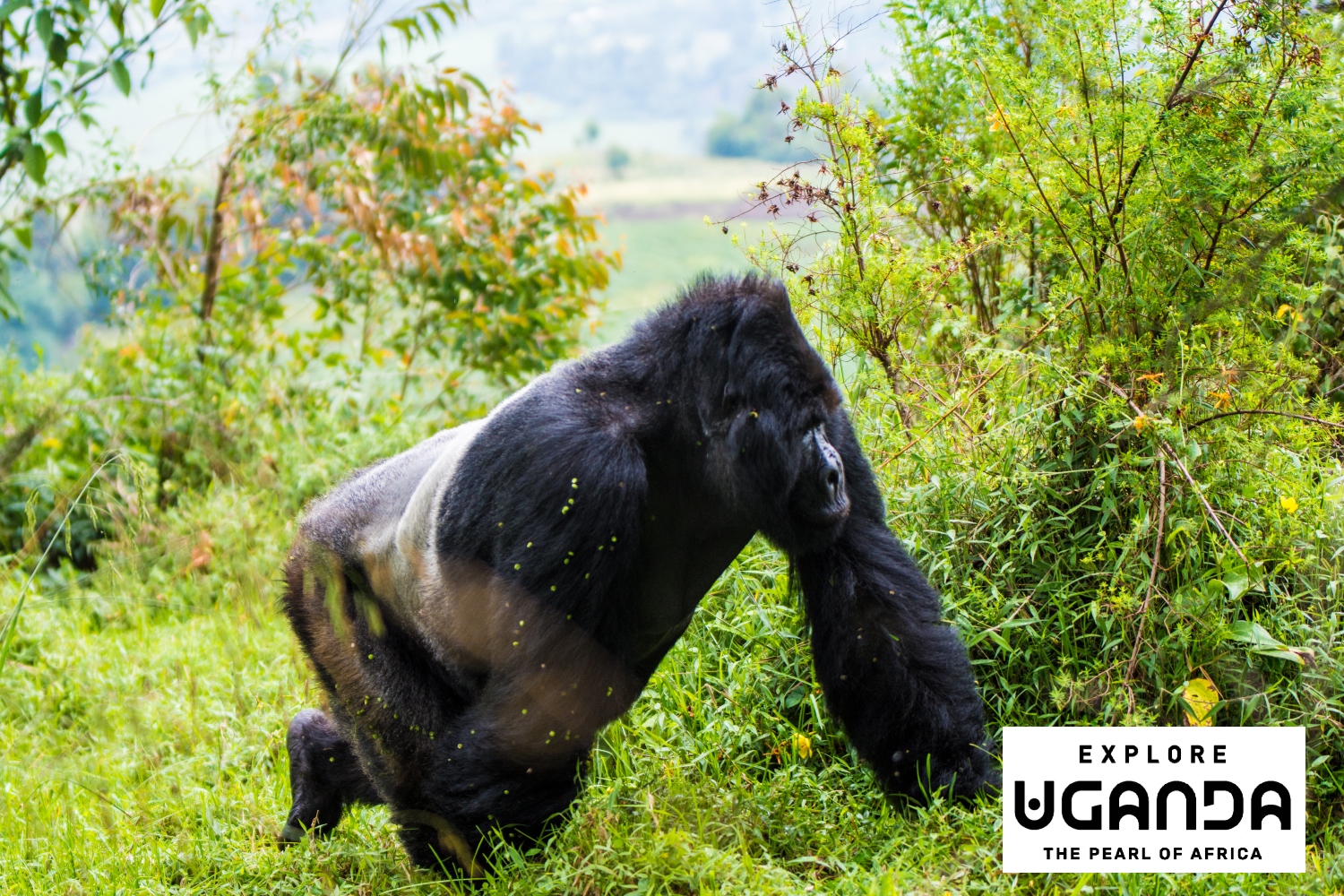It’s a hot African afternoon as we meet Adeola at one of Cape Town’s most significant monuments.
We’ve walked through the fragrant, verdant coolness of the Company Gardens and emerged blinking into the sunlight at “The Arch” – dedicated to the memory of anti-apartheid legend Bishop Desmond Tutu.
It’s a fitting introduction to what is about to follow.
Adeola is Nigerian by birth but has lived in SA for more than two decades. He’s been a guide with Coffeebeans Routes for three years, taking guests on a range of specialised tours of this pulsating city. They cover such diverse topics as jazz, revolution and local theatre.
The three-hour walk we’re about to experience will cover the history of the city’s cuisine and how colonisation and slavery shaped the meals its residents eat today.
Our little group searches for shade as Adeola solemnly reads lines from the South African Constitution. “This is a country still trying to find itself,” he says with commendable honesty.
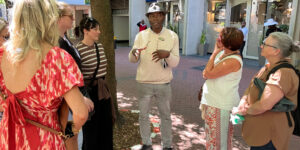 Adeola leads the tour group
Adeola leads the tour group
It’s a short walk to our first stop in St George’s Mall. Adeola leads us off the main drag and into a small row of shops sandwiched inconspicuously between a Holiday Inn and a Wimpy.
It’s the kind of place tourists would never discover on their own…and the very reason this tour exists.
Our port of call is Mariam’s Kitchen and we’re immediately intoxicated by the smells emanating from within. It’s been here for more than 30 years and is something of a Cape Town institution.
We huddle around some white plastic tables as Adeola orders and then tells us a little more about the food history of the region.
Sorghum was the staple food of the local indigenous people but this all changed when British colonists introduced corn to feed mine workers. So significant was the change that sorghum wasn’t farmed for more than 200 years.
So it continued through the generations as different overseas influences arrived, from the Dutch to the Cape Malay slaves, each bringing new foods, recipes and cooking methods.
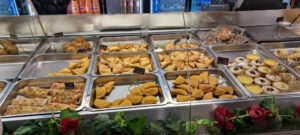 Mariam’s Kitchen
Mariam’s Kitchen
By now all this talk of food has us salivating at the treats that suddenly arrive at the table. A range of samosas – chick pea and coriander, cheese and vegetable, and chicken – that are just delicious, particularly with a dollop of home-made chutney on top and a cup of the locally produced Rooibos tea. At six rand each (about 50c) they are an affordable snack for the locals who dine here.
“Samosas have become a major source of income for women who know how to make them,” says Adeola.
As we chow down, I can’t help but notice the dish being served at a neighbouring table. Inquiries reveal it’s called The Gatsby and is the biggest chip butty I’ve ever seen.
With our hunger temporarily sated, we set off again and walk through Greenmarket Square which was first established in 1696. Both food and slaves were once sold here but now it is a buzzing meeting point for locals and tourists looking for souvenirs.
On the way to our next stop Adeola leads us through a big supermarket, informing us that 97 per cent of food in South Africa now comes from such establishments, meaning they have almost total monopoly on what people buy and eat.
With this alarming statistic still fresh in our minds, we reach The Grand Parade, the oldest public space in Cape Town. It’s here we find Nobantu Restaurant and huddle into the small shop to escape the midday heat.
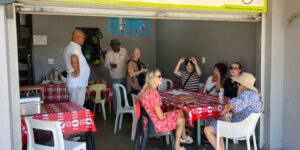 Nobantu Restaurant
Nobantu Restaurant
There are only a handful of tables, with red and white Coca-Cola inspired plastic tablecloths and white plastic chairs. The floor and walls are grey concrete with a tattered blue menu sheet on the back wall.
It’s a bit like eating in someone’s garage and it’s doubtful a party of seven such as ours has ever graced this establishment.
We are encouraged to try pap, which is a local staple and apparently was a favourite of one Nelson Mandela. It’s maize that’s ground into powder and then you add water or it can also be eaten with sour milk. Imagine packet mash potato and you’ve got the idea…
While the pap may not have been to my taste, I didn’t mind samp, which is another traditional dish made from ground corn kernels. We also had a plate of beetroot, carrot, baked beans, spinach and potatoes that went down a treat. Each dish was about 60-80 rand ($5-$7).
Now stuffed to the gunnels, we welcomed the chance to drive to our final stop of the tour, the Bo-Kaap neighbourhood, which dates back to the 1760s and was where slaves were brought from Malaysia, Indonesia and other parts of Africa.
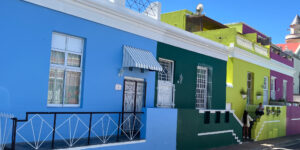 Apart from the famous brightly painted houses, the area is known for its food and markets, with the unmistakeable smell of spices and curried dishes wafting on the air. Several of our group took the opportunity to buy some exotic goods in one of the local stores.
Apart from the famous brightly painted houses, the area is known for its food and markets, with the unmistakeable smell of spices and curried dishes wafting on the air. Several of our group took the opportunity to buy some exotic goods in one of the local stores.
As the tour came to an end, Adeola delivered a couple of sobering final statistics. He told us that 45 per cent of South Africa’s potential food is wasted and that one third of the country’s people are in danger of starvation.
Worth bearing in mind the next time your mother tells you to clean your plate.
——————–
Cape Town was recently named the ‘Best City in the World’ by readers of Time Out, with more than 18,000 people from around the world voting.
There’s no doubt ‘The Mother City’ offers a massive variety of things to do. The cable car ride up Table Mountain, the penguins of Boulders Beach, the Cape of Good Hope, the V&A Waterfront and Robben Island, to name but a few.
But for something a little different, the food tour from Coffeebeans Routes really gives visitors something to sink their teeth into.
https://coffeebeansroutes.com/
www.aboveandbeyondholidays.com.au
